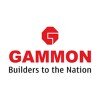Filter interviews by
Inderjit Mehta Construction Interview Questions and Answers
Inderjit Mehta Construction Interview Experiences
2 interviews found

(5 Questions)
- Q1. CONSTRUCTRUCTION MATERIAL TESTING
- Q2. CEMENT, SAND , AGGREGATE , TMT BAR , BRICKS , SOIL , BITUMINOUS AND ETC
- Q3. PRODCUTION OF CONCRETE
- Ans.
Production of concrete involves mixing cement, water, aggregates, and sometimes additives to create a strong and durable construction material.
Concrete is made by mixing cement, water, and aggregates such as sand and gravel in specific proportions.
Additives like fly ash or slag may be used to enhance certain properties of the concrete.
The mixture is then poured into molds or formwork and allowed to cure and harden over...
- Q4. PRODUCTION OF BITUMINOUS MATERIALS
- Ans.
Production of bituminous materials involves mixing bitumen with aggregates to create asphalt for road construction.
Bitumen is a sticky, black, and highly viscous liquid or semi-solid form of petroleum.
Aggregates such as sand, gravel, and crushed stone are mixed with bitumen to create asphalt.
The mixture is heated to high temperatures to ensure proper blending and consistency.
Quality control measures are essential to en...
- Q5. DESIGN MIX OF ANY CONCRETE
- Ans.
Design mix of concrete refers to the proportions of materials used to create a specific type of concrete with desired properties.
Design mix includes the ratio of cement, aggregates, water, and admixtures.
For example, a common design mix for M20 grade concrete is 1:1.5:3 (cement: sand: aggregates).
The design mix is determined based on the required strength, workability, and durability of the concrete.
Testing and adjusti...
Interview Preparation Tips
Quality Engineer Interview Questions asked at other Companies
I appeared for an interview before Feb 2024.
(2 Questions)
- Q1. Can you describe your previous experience, and are you prepared to manage the entire site?
- Ans.
I have 5 years of experience managing construction projects and am fully prepared to manage the entire site.
Managed construction projects for 5 years
Experience in overseeing site operations and coordinating with subcontractors
Skilled in project planning, budgeting, and resource allocation
Strong leadership and communication skills
Prepared to handle all aspects of site management
- Q2. Can you describe how you would manage my site across all levels?
- Ans.
I would manage your site by overseeing all aspects of the project, coordinating with team members, monitoring progress, and ensuring timely delivery.
Develop a comprehensive project plan outlining tasks, timelines, and responsibilities
Regularly communicate with team members to provide updates and address any issues
Monitor progress and adjust plans as needed to ensure project stays on track
Coordinate with stakeholders to...
Interview Preparation Tips
Be aware of potential pitfalls, such as colleagues who may take advantage of the company's generosity. It's crucial to maintain a professional demeanor and set clear boundaries.
Ultimately, it's essential to weigh the pros and cons and consider whether the company's values and culture align with your own. By doing your due diligence, you can make an informed decision and find a workplace that supports your growth and well-being.
Project Incharge Interview Questions asked at other Companies
Top trending discussions






Interview questions from similar companies

Sales Executive Interview Questions & Answers
Larsen & Toubro Limitedposted on 10 Sep 2020
I applied via Campus Placement and was interviewed before Sep 2019. There were 4 interview rounds.
Interview Questionnaire
2 Questions
- Q1. Technical
- Q2. HR
Interview Preparation Tips
Interview comprises "inter + view". So, interviewer only wants that candidate should according to job profile.

Software Engineer Interview Questions & Answers
Larsen & Toubro Limitedposted on 20 Feb 2015
Interview Questionnaire
1 Question
- Q1. About Yourself
Interview Preparation Tips
Experience: Test level was medium, as i also sat for mahindra, i found L&T test was harder than mahindra!
Tips: Just study RS agarwal
Round: Group Discussion
Experience: It was easy for me, coz i was aware about tips of GD
Tips: Be the leader, if possibleTalk in between, even if u dont know topic much
Duration: 20 minutes
Round: Interview
Experience: This question was damn easy for me, coz i can talk more based on my activities & resume
Tips: Dont hesitate, stay calm & describe yourself, but not family background
General Tips: Be yourself, no technical knowledge is required(depends on panel u get)
Skill Tips: ""
College Name: IIT Roorkee
Motivation: To get placed!

Senior Engineer Interview Questions & Answers
Larsen & Toubro Limitedposted on 10 Sep 2017
I appeared for an interview before Sep 2016.
Interview Questionnaire
1 Question
- Q1. Ocampo, basic electronics and C
Interview Preparation Tips
Duration: 1 hour
Total Questions: 50
Skills: Embedded Systems, C Programming
College Name: Sahyadri college of engineering

Interview Questionnaire
3 Questions
- Q1. Why do you want to join the company
- Ans.
I want to join the company because of its innovative projects and strong company culture.
I am impressed by the company's track record of successful projects.
I believe the company's values align with my own professional goals.
I am excited about the opportunity to work with a talented team of professionals.
I see great potential for growth and development within the company.
- Q2. Why should we choose you
- Ans.
I am a dedicated and hardworking individual with relevant skills and experience.
I have a strong work ethic and am committed to delivering high-quality results.
I have relevant experience and skills that align with the requirements of the position.
I am a quick learner and adaptable to new environments.
I am passionate about the industry and eager to contribute to the team.
- Q3. What profile would you like to like to work in
- Ans.
I would like to work in a marketing and communications profile.
Experience in creating marketing campaigns
Strong communication skills
Ability to analyze market trends and consumer behavior
Proficiency in social media and digital marketing
Collaboration with cross-functional teams
Interview Preparation Tips

Senior Engineer Interview Questions & Answers
Larsen & Toubro Limitedposted on 10 Sep 2015
I applied via PLACEMENT
Interview Preparation Tips
Experience: Good detailed interview in terms of technical knowledge
Tips: Should be thorough with the projects you have done during the course
General Tips: be confident of what you put in your resume
Technical knowledge regarding projects undertaken during engineering should be sound
Be confident
Skills: Communication, Thinking capability, knowledge applying capability
College Name: V.E.S Institute Of Technology
Motivation: Opportunity to work in a renowned and core technical company
Funny Moments: We consider the interview panelists to be as tough as our viva externals. Interviewers are mostly on your side(contrary to viva professors :P)

Assistant Manager Interview Questions & Answers
Larsen & Toubro Limitedposted on 18 Jan 2020
I applied via Naukri.com and was interviewed in Jul 2019. There were 3 interview rounds.
Interview Questionnaire
4 Questions
- Q1. Asked about To mentioned areas of weakness of L&T, or needs improvement?
- Q2. How to make check or maintain elevation of Underground Piping.
- Ans.
Maintain elevation of underground piping by using level instruments and proper installation techniques.
Use a level instrument to check the elevation of the piping during installation.
Ensure that the piping is installed with a consistent slope to prevent low spots where water can accumulate.
Regularly inspect the piping to ensure that it has not shifted or settled, which can affect the elevation.
Consider using supports o...
- Q3. My Job specific role & responsibility, in previous organisation.
- Ans.
In my previous role as Assistant Manager, I was responsible for overseeing daily operations, managing staff, and ensuring customer satisfaction.
Managed a team of employees and delegated tasks effectively
Handled customer complaints and resolved issues in a timely manner
Created and implemented strategies to improve efficiency and productivity
Collaborated with other departments to achieve company goals
Conducted performanc
- Q4. Welding Electrodes for different materials.
- Ans.
Welding electrodes are chosen based on the material being welded. Different materials require different types of electrodes.
Electrodes for mild steel have a coating that produces a stable arc and minimal spatter.
Stainless steel electrodes have a coating that resists corrosion and produces a smooth, clean weld.
Cast iron electrodes have a high nickel content to prevent cracking.
Aluminum electrodes have a special coating ...
Interview Preparation Tips

Assistant Manager Interview Questions & Answers
Larsen & Toubro Limitedposted on 11 May 2018
Interview Questionnaire
2 Questions
- Q1. The question was regarding the present role I'm assigned and how the implementation of scheduling tools can help planning of E.P.C. in their present business unit.
- Q2. Technical question on my present project scheduling role & any other digital concept i'm associated with it currently.
Interview Preparation Tips
Experience: These days, not many companies shortlists the candidates by themselves instead they hire third parties in order to minimize the resources and cost burden. These talent acquisition members initially filters the resumes based upon the Years of Experience & the key skills which they receive from their parent companies by matching with the 70-80 % kind of similar roles of the candidates.
In my case, both my experience & roles are perfectly in sync with their requirements. So, they contacted me via naukri.com and asked me to share the updated resume & within a week I got the confirmation of my resume shortlisting & date for the 1st round of interview.
Round: Test
Experience: Primavera Scheduling Test

I appeared for an interview before Mar 2020.
Interview Questionnaire
2 Questions
- Q1. Technical
- Q2. Family background
Interview Preparation Tips
Inderjit Mehta Construction Interview FAQs
Tell us how to improve this page.
Interview Questions for Popular Designations
Inderjit Mehta Construction Interview Process
based on 2 interviews
Interview experience
Interview Questions from Similar Companies
Inderjit Mehta Construction Reviews and Ratings
based on 31 reviews
Rating in categories
|
Site Engineer
7
salaries
| ₹3 L/yr - ₹5 L/yr |
|
Civil Engineer
5
salaries
| ₹1.8 L/yr - ₹6 L/yr |
|
Project Manager
4
salaries
| ₹9.6 L/yr - ₹18.6 L/yr |
|
Accountant
4
salaries
| ₹3.9 L/yr - ₹4.7 L/yr |
|
Store Incharge
4
salaries
| ₹3.6 L/yr - ₹3.8 L/yr |

Larsen & Toubro Limited

L&T Construction

Tata Projects

Megha Engineering & Infrastructures
- Home >
- Interviews >
- Inderjit Mehta Construction Interview Questions












